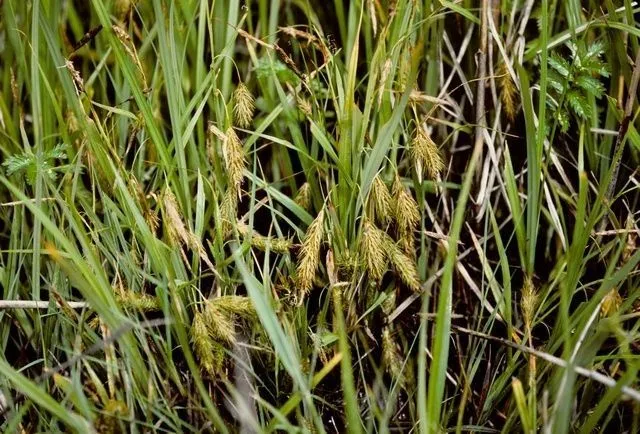
Author: Schreb. ex Wahlenb.
Bibliography: Kongl. Vetensk. Acad. Nya Handl. 24: 164 (1803)
Year: 1803
Status: accepted
Rank: species
Genus: Carex
Vegetable: False
Observations: N. & NE. Europe, C. & E. Canada to NE. U.S.A.
Chaffy sedge, scientifically known as Carex paleacea, is a notable member of the Cyperaceae family. This distinctive plant was first described in the early 19th century, finding its official classification in 1803 as documented in the works of Schreb. ex Wahlenb. within the Kongl. Vetensk. Acad. Nya Handl. This historical text lends an academic anchor to the recognition of this species.
Carex paleacea thrives primarily in the cooler climates of northern and northeastern Europe, making its home in a range that stretches from the expansive landscapes of central and eastern Canada down to the northeastern regions of the United States. Its presence in these regions highlights the plant’s adaptability to diverse environmental conditions prevalent in these areas.
As a member of the Cyperaceae family, chaffy sedge shares common characteristics with other sedges, such as its grass-like appearance and the formation of dense clumps which contribute significantly to the ecology of wetlands and damp meadows. Its robust growth habit plays a crucial role in soil stabilization and water filtration in its native habitats, enhancing the biodiversity and health of these ecosystems.
Whether encountered by botanists on European terrains or amidst the wetlands of North America, Carex paleacea stands out as a species of ecological importance and botanical interest.
Dan: strand-star
Eng: chaffy sedge
Nob: havstarr
Nno: havstorr
Swe: strandstarr, vihnesara
Fin: vihnesara
Fra: carex paléacé, carex écailleux
Sme: ratnelukti
En: Chaffy sedge
Da: Strand-star
Fi: Vihnesara
Fr: Carex paléacé, Carex écailleux
Se: Ratnelukti
Nb: Havstarr
Nn: Havstorr
Sv: Strandstarr, Vihnesara
Taken Jan 1, 1900 by EOL − Encyclopedia of Life (cc-by-nc)
Taken Jan 1, 1900 by EOL − Encyclopedia of Life (cc-by-nc)
Taken Jan 1, 1900 by EOL − Encyclopedia of Life (cc-by-nc)
Taken Jan 1, 1900 by EOL − Encyclopedia of Life (cc-by-nc)
Taken Jan 1, 1900 by EOL − Encyclopedia of Life (cc-by-nc)
Taken Jan 1, 1900 by EOL − Encyclopedia of Life (cc-by-nc)
Taken Jan 1, 1900 by EOL − Encyclopedia of Life (cc-by-nc)
Growth habit>: Graminoid
Ph maximum: 7.5
Ph minimum: 7.0
Light: 8
Atmospheric humidity: 8
Soil nutriments: 2
Family: Myrtaceae Author: (F.Muell.) K.D.Hill & L.A.S.Johnson Bibliography: Telopea 6: 402 (1995) Year: 1995 Status:…
Family: Rubiaceae Author: Pierre ex A.Froehner Bibliography: Notizbl. Bot. Gart. Berlin-Dahlem 1: 237 (1897) Year:…
Family: Sapindaceae Author: Koidz. Bibliography: J. Coll. Sci. Imp. Univ. Tokyo 32(1): 38 (1911) Year:…
Family: Asteraceae Author: A.Gray Bibliography: Pacif. Railr. Rep.: 107 (1857) Year: 1857 Status: accepted Rank:…
Family: Fabaceae Author: Medik. Bibliography: Vorles. Churpfälz. Phys.-Ökon. Ges. 2: 398 (1787) Year: 1787 Status:…
Family: Aspleniaceae Author: (Cav.) Alston Bibliography: Bull. Misc. Inform. Kew 1932: 309 (1932) Year: 1932…